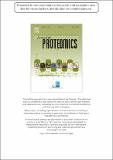Buscar
Mostrando ítems 1-10 de 68
Snake venomics of the pit vipers Porthidium nasutum, Porthidium ophryomegas, and Cerrophidion godmani from Costa Rica: Toxicological and taxonomical insights
(2012-02-16)
Within the Neotropical pit vipers, a lineage of primarily Middle American snake species
referred to as the “Porthidium group” includes the genera Atropoides, Cerrophidion, and
Porthidium. In this study, the venom proteomes ...
Two phospholipase A2 inhibitors from the plasma of Cerrophidion (Bothrops) godmani which selectively inhibit two different group-II phospholipase A2 myotoxins from its own venom: isolation, molecular cloning and biological properties
(2000-03-15)
Myotoxic phospholipases A2 (PLA2s; group II) account for most of the muscle-tissue damage that results from envenomation by viperid snakes. In the venom of the Godman's viper (Cerrophidion godmani, formerly Bothrops godmani), ...
Structure of myotoxin-II, a catalytically inactive Lys49 phospholipase A2 homologue from Atropoides nummifer venom
(2006)
Lys49 snake-venom phospholipase A2 (PLA2) homologues are highly myotoxic
proteins which, although lacking catalytic activity, possess the ability to disrupt
biological membranes, inducing significant muscle-tissue loss ...
Venomic and antivenomic analyses of the Central American coral snake, Micrurus nigrocinctus (Elapidae)
(2011-01-31)
The proteome of the venom of Micrurus nigrocinctus (Central American coral snake) was analyzed by a “venomics” approach. Nearly 50 venom peaks were resolved by RP-HPLC, revealing a complex protein composition. Comparative ...
Snake Venomics of the Lesser Antillean Pit Vipers Bothrops caribbaeus and Bothrops lanceolatus: Correlation with Toxicological Activities and Immunoreactivity of a Heterologous Antivenom
(2008-10)
The venom proteomes of the snakes Bothrops caribbaeus and Bothrops lanceolatus, endemic to the
Lesser Antillean islands of Saint Lucia and Martinique, respectively, were characterized by reversephase
HPLC fractionation, ...
Venom diversity in the neotropical genus Tityus: implications for antivenom design emerging from molecular and immunochemical analyses across endemic areas of scorpionism
(2020)
Scorpions of the Neotropical genus Tityus are responsible for most severe envenomations in the Caribbean, South America, and Lower Central America (LCA). Although Tityus is taxonomically complex, contains high toxin ...
Structural and functional characterization of myotoxin I, a Lys49 phospholipase A(2) homologue from Bothrops moojeni (Caissaca) snake venom
(2000-01-01)
Myotoxin-I (MjTX-I) was purified to homogeneity from the venom of Bothrops moojeni by ion-exchange chromatography on CM-Sepharose. Its molecular weight, estimated by SDS–PAGE, was 13,400 (reduced) or 26,000 (unreduced). ...
Snake venomics of the South and Central American Bushmasters. Comparison of the toxin composition of Lachesis muta gathered from proteomic versus transcriptomic analysis
(2008-04-30)
We report the proteomic characterization of the venoms of two closely related pit vipers of the genus Lachesis, L. muta (South American Bushmaster) and L. stenophrys (Central American Bushmaster), and compare the toxin ...
Differential susceptibility of C2C12 myoblasts and myotubes to group II phospholipase A2 myotoxins from crotalid snake venoms
(2005)
Group II phospholipase A2 (PLA2) myotoxins isolated from Viperidae/Crotalidae snake venoms induce a rapid cytolytic
effect upon diverse cell types in vitro. Previous studies suggested that this effect could be more ...
Snake Venomics of the Central American Rattlesnake Crotalus simus and the South American Crotalus durissus Complex Points to Neurotoxicity as an Adaptive Paedomorphic Trend along Crotalus Dispersal in South America
(2010)
We report a comparative venomic and antivenomic characterization of the venoms of newborn and adult specimens of the Central American rattlesnake, Crotalus simus, and of the subspecies cumanensis, durissus, ruruima, and ...



